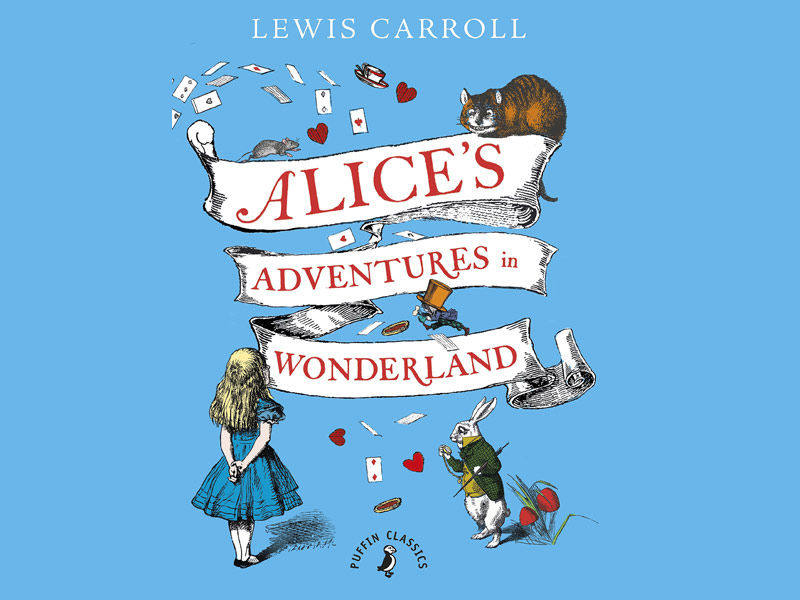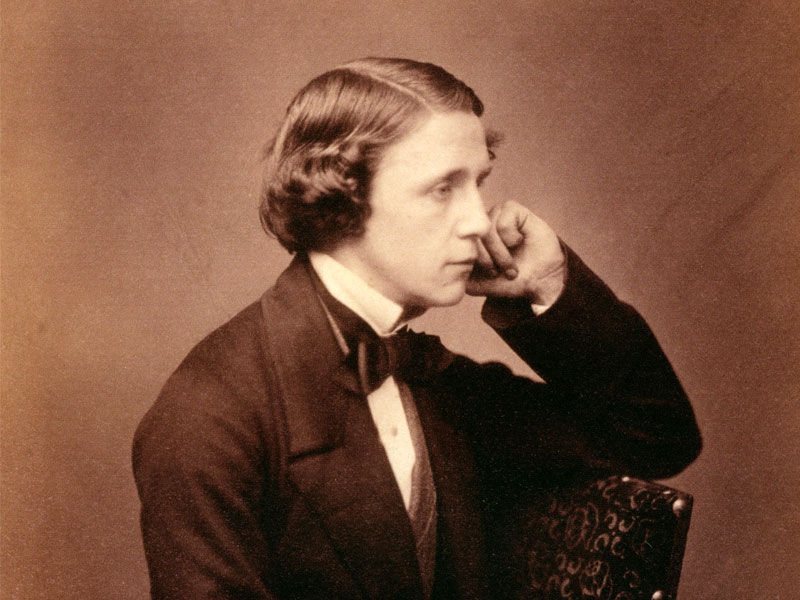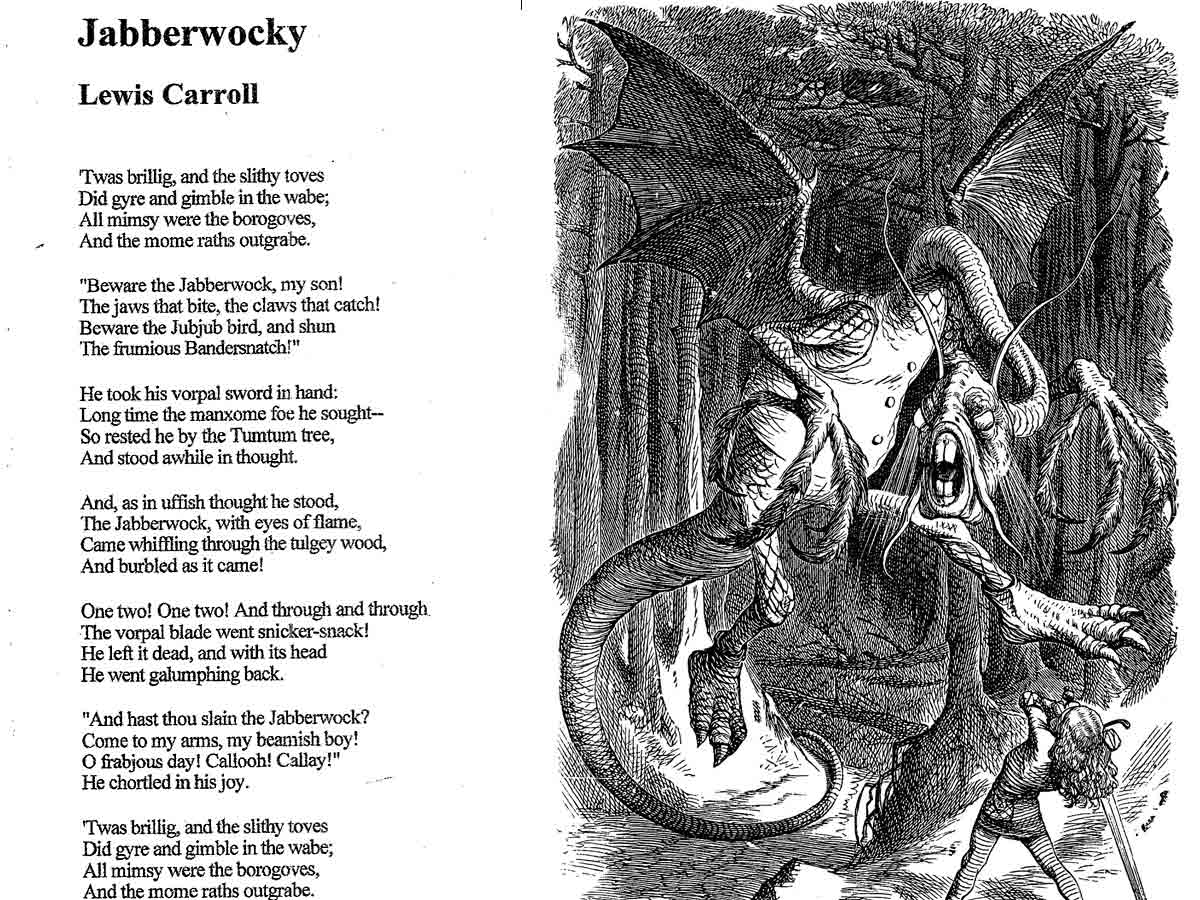Lewis Carroll (27 January 1832–14 January 1898) was an English children’s book author best known for Alice’s Adventures in Wonderland and its sequel through the Looking-Glass. He was known for his ability to play with words, logic, and imagination. Literary nonsense encompasses the poems “Jabberwocky” and “The Hunting of the Snark.” He was also a deacon in the Anglican Church and a mathematician, photographer, and inventor.
Carroll came from a family of high-church Anglicans, and he had a long association with Christ Church, Oxford, where he worked as a scholar and teacher for the most of his life. Alice Liddell, daughter of Henry Liddell, Dean of Christ Church, is largely regarded as the inspiration for Alice in Wonderland, despite Carroll’s denials. Scholars are split on whether his child-parenting relationship included an erotic component. Carroll’s memorial stone was unveiled in Poets’ Corner, Westminster Abbey, in 1982. In various places of the world, there are Lewis Carroll societies dedicated to the pleasure and promotion of his writings.
Carroll was a shy man who suffered from a stutter and was deaf in one ear throughout his life (the result of a fever he suffered from in childhood). Carroll’s identification with the Dodo in Alice’s Adventures in Wonderland has led some to speculate (though this is merely speculation) that this was because of Carroll’s own trouble pronouncing his last name (‘Do-Do,’ from Dodgson).
Deep Analysis of Jabberwocky

Lewis Carroll’s “Jabberwocky” is a nonsensical poem about the death of a monster known as “the Jabberwock.”
Nonsense verse is a type of nonsense poetry that features strong prosodic components, such as rhythm and rhyme. It uses nonsensical writing methods and has a whimsical and hilarious tone. Limericks are arguably the most well-known kind of nonsense poem, but they’re more commonly employed for straight humor these days than for their nonsensical impact.
It was featured in Lewis Carroll’s 1871 sequel to Alice’s Adventures in Wonderland, Through the Looking-Glass (1865). Alice’s experiences in Looking-Glass Land, a back-to-front world, are told in this book. Alice discovers a book written in an apparently unknown language in an early scenario in which she first sees the chess piece figures White King and Queen. She recognizes the lyrics on the pages are written in mirror-writing as she realizes she is travelling through an inverted universe. She reads the mirrored stanza of “Jabberwocky” while holding a mirror to one of the poems. Alice is as perplexed by the meaningless poem as she is by the strange world she has entered, eventually revealed to be a dreamscape.
Carroll penned the first verse to what would become “Jabberwocky” at Croft on Tees, near Darlington, where he grew up, and a decade before Alice’s Adventures in Wonderland and its sequel to the Looking-Glass were published. Mischmasch, a magazine he created and drew for his family’s enjoyment, published it in 1855. “Stanza of Anglo-Saxon Poetry” was the title of the work, which read as follows:
‘Twas bryllyg, and ye slythy toves did gyre and gymble in ye wabe: All mimsy were ye borogoves; and ye mome raths outgrabe.
To approach the Middle and Early Modern English scribal shorthand EME ye.svg – a variation of the letter (thorn) paired with the superscript form of the letter “e,” Carroll used the letter combination ye for the word the. The verse is printed in faux-medieval script as a “relic of old Poetry” before being reprinted in “contemporary characters” on the same page.

Carroll wrote the rest of the poem while staying with family in Whitburn, near Sunderland. The tale of the Sockburn Worm and the local Sunderland tradition of the Lambton Worm may have influenced the narrative.
Another approach to understanding ‘Jabberwocky’ is to think about the oral fairy-tale tradition. As Vladimir Propp shown in his Morphology of the Folk Tale, fairy tales tend to employ similar themes, character types, and plot lines. As a result, a hero frequently departs from home (much as the brave hero of ‘Jabberwocky’ must depart to fight the Jabberwock) and must confront a villain or monster (the Jabberwock) before triumphing and returning home. These aspects may clearly be found in Carroll’s poem.
Also Read, The Waste Land: A Beauty of poetry that Defines Death by…
Carroll was familiar with chapbooks like The World Turned Upside Down and stories like “The Grand Panjandrum,” so the notion of nonsensical verse was not new to him. Nonsense was included in Shakespeare’s writing and was well known in the Brothers Grimm’s fairytales, some of which are known as lügenmärchen or lying stories. “Jabberwocky” might be a parody of the old German song “The Shepherd of the Giant Mountains,” in which a shepherd kills a gryphon that is assaulting his sheep, according to Roger Lancelyn Green. Menella Bute Smedley, Carroll’s cousin, had translated the song into English in blank verse in 1846, long before the Alice novels were published.

The novel “Jabberwocky” has been translated into 65 languages, with “Jabberwocky” being one of them. Because the poem follows English grammar and many of the poem’s main terms are imagined, translation may be challenging. Translators have usually coped with these by inventing their own comparable terminology. These are often spelled or sounded similar to Lewis Carroll’s, while also respecting the morphology of the language into which they are being translated. “‘Twas brillig” becomes “Il brilgue” in Frank L. Warrin’s French version.





























